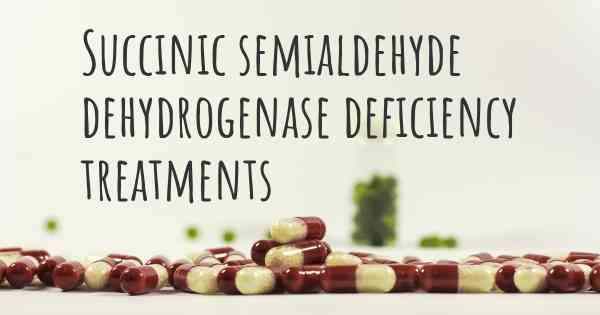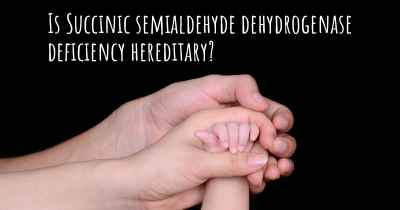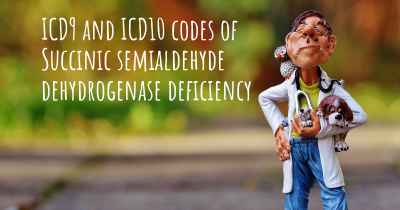What are the best treatments for Succinic semialdehyde dehydrogenase deficiency?
See the best treatments for Succinic semialdehyde dehydrogenase deficiency here

Succinic semialdehyde dehydrogenase deficiency (SSADH deficiency) is a rare genetic disorder that affects the metabolism of the neurotransmitter gamma-aminobutyric acid (GABA). This condition is caused by mutations in the ALDH5A1 gene, which leads to a deficiency in the enzyme succinic semialdehyde dehydrogenase. As a result, individuals with SSADH deficiency experience a buildup of GABA and its metabolite, succinic semialdehyde, in various tissues and organs.
Symptoms and Diagnosis:
The symptoms of SSADH deficiency can vary widely among affected individuals. Some common symptoms include developmental delay, intellectual disability, speech and language impairments, hypotonia (low muscle tone), ataxia (lack of muscle coordination), seizures, and behavioral problems. These symptoms may appear in infancy or early childhood and can range from mild to severe.
Diagnosing SSADH deficiency typically involves a combination of clinical evaluation, biochemical testing, and genetic testing. The measurement of GABA and succinic semialdehyde levels in urine, plasma, or cerebrospinal fluid can help confirm the diagnosis. Genetic testing can identify mutations in the ALDH5A1 gene, providing a definitive diagnosis.
Treatment Options:
Currently, there is no cure for SSADH deficiency. However, several treatment approaches aim to manage the symptoms and improve the quality of life for individuals with this condition.
1. Medications:
Medications are often prescribed to help manage the symptoms associated with SSADH deficiency. Antiepileptic drugs (AEDs) may be used to control seizures, while medications such as baclofen or benzodiazepines can help alleviate muscle stiffness and spasticity. Additionally, certain medications may be prescribed to address behavioral issues, anxiety, or sleep disturbances.
2. Physical and Occupational Therapy:
Physical and occupational therapy can play a crucial role in managing the motor and developmental challenges associated with SSADH deficiency. These therapies focus on improving muscle strength, coordination, balance, and overall motor skills. Occupational therapy can also help individuals develop daily living skills and enhance their independence.
3. Speech and Language Therapy:
Speech and language therapy is essential for individuals with SSADH deficiency who experience speech and communication difficulties. Speech therapists can work with patients to improve articulation, language comprehension, and expressive language skills. Augmentative and alternative communication (AAC) devices may also be recommended to facilitate communication.
4. Nutritional Support:
Proper nutrition is crucial for individuals with SSADH deficiency. A well-balanced diet, tailored to the individual's needs, can help support overall health and development. In some cases, dietary modifications may be recommended, such as a ketogenic diet, which is low in carbohydrates and high in fats. This diet has shown potential in reducing seizures in some individuals with SSADH deficiency.
5. Behavioral and Psychological Support:
Individuals with SSADH deficiency may experience behavioral challenges, including hyperactivity, impulsivity, anxiety, and attention deficits. Behavioral interventions, counseling, and psychological support can be beneficial in managing these issues. Working with psychologists or behavioral therapists can help develop strategies to address specific behavioral concerns and improve overall well-being.
6. Research and Clinical Trials:
As SSADH deficiency is a rare disorder, ongoing research and clinical trials are essential for advancing our understanding of the condition and exploring potential treatment options. Participation in clinical trials can provide access to experimental therapies and contribute to the development of new treatments.
Conclusion:
Succinic semialdehyde dehydrogenase deficiency is a complex disorder that requires a multidisciplinary approach to treatment. While there is currently no cure, a combination of medications, therapies, and supportive interventions can help manage the symptoms and improve the quality of life for individuals with SSADH deficiency. Ongoing research and clinical trials hold promise for future advancements in treatment options.








